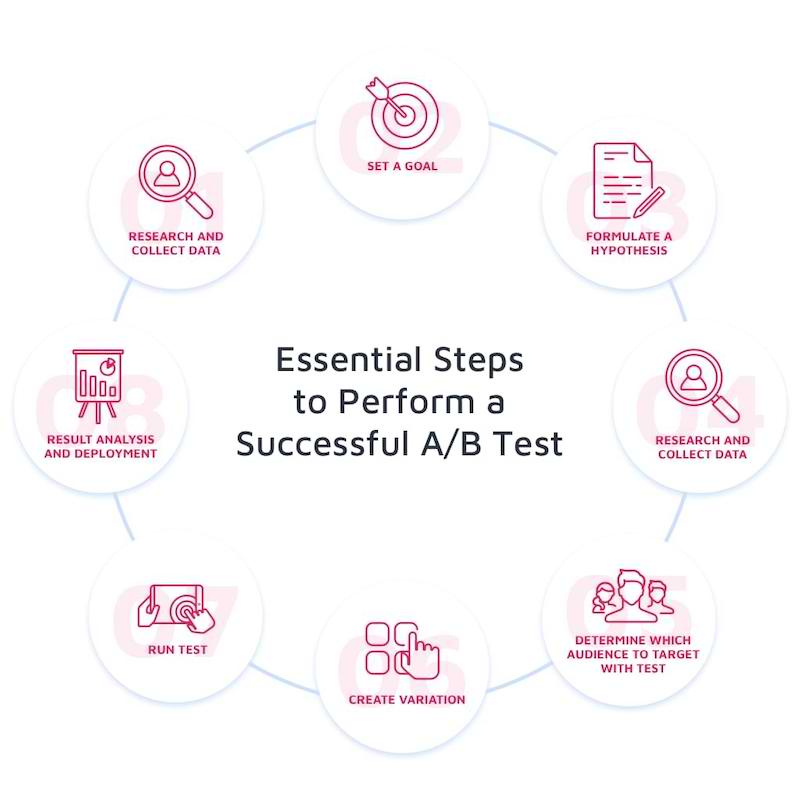Balancing Security and UX With Iterative Experimentation
Experimentation is essential for modern applications as it will allow you to adapt early and improve your product periodically for long-term success.
Join the DZone community and get the full member experience.
Join For FreeAs transitioning to the digital world is the norm today, businesses face the challenge of constantly maximizing performance while keeping a lookout for potential threats. However, whether it’s spotting fraud in banking and eCommerce, moderating content on social media and any other sites with user-generated content, or identifying anomalies, it is a balancing act between strong security and a smooth user experience.
The iterative experimentation supported by A/B testing can serve as a valuable mechanism to fine-tune algorithms and the overall user experience across services in multiple sectors under the right conditions. Not only do these methods enhance people’s productivity — they develop trust and satisfaction from users as well.
Why Experimentation Is Essential

Contemporary systems frequently rely on intricate algorithms that influence two primary domains:
- Security and accuracy: Keeping the threats at bay while ensuring our systems run smoothly.
- User experience (UX): False hitting the path of legitimate users with pointless obstacles.
Teams can systematically test and evaluate a variety of settings, decision points, or interface designs through experimentation. With data-driven insights, organizations optimize their systems, improve results, and provide scalable and user-centric solutions.
Four Fundamental Vectors of Industry Experimentation
1. Tuning Algorithm Thresholds
A common approach to system tuning is to experiment with different thresholds to identify actions to perform. It can highly improve your outcomes with this approach:
-
Option A: Raise thresholds of verification, potentially flagging more transactions, posts, or activity. Alternatively, they can set a lower threshold, making it easier for users to pass but increasing the risk (option b).
Metrics to Track
- False positive rate (aka the share of legitimate actions tagged wrongly)
- Fraud, spam, anomaly detection rates, etc.
- Customer satisfaction scores
2. Flexibly Responsive Adjustments to Context
Study how systems deal with risk or operate when stakes are at their highest:
- Option A: Automated responses (biometric checks, default recommendations, etc.)
- Option B: Levi something more like iterations, alternative behavior logic, manual reviews or otherwise customized explanation.
Metrics to Track
- User abandonment (or disengagement) metrics
- Time to resolution/process completion
- User satisfaction rates post-responses
3. Improving Communication and Feedback from End-Users
Look into different approaches to warn users of possible threats:
- Option A: Provide simple alerts, e.g., "An issue was detected."
- Option B: Send informative notifications, for example, "We noticed unusual activity on [platform/feature name]."
Metrics to Track
- Trust scores from follow-up surveys
- Rates of participation in support or feedback mechanisms
- User-initiated reports or rectifying actions
That allows the information to be straight to the point, focused on what really matters.
How to Move from Experiments to Organizations
Define Success Metrics Simply
Track the right metrics for a good experience to your customers. Some of the key performance indicators:
- Correctness: In fraud or anomaly detection, this refers to accurately identifying fraud
- False positives reduction: Reducing the unwanted alerts
- User satisfaction and NPS: Tracking NPS to understand customer loyalty
Scale Well, But Start Small
Start by testing your experiments with smaller user groups or systems. Once you get promising initial results, then you scale up. Using feature flagging to execute your experiments will help you control the risks associated with your implementation.
Monitor Real-Time Metrics
With online decision-making systems, you have to track streaming data while the experiment is running. This also helps in identifying issues early and rolling back quickly if needed.
Use Segmentation to Gain Deeper Insights
We would build an abstract model of system scenarios in which different types of users interact with systems in different ways. With micro-measurements, this starts to really pay off. The performance of each group within each segment can provide a clearer picture of real user behavior.
Results: Balancing Security and User Experience
This process of experimentation can help find the balance between system and user performance. example of which is a company testing out dynamic authentication in high-risk scenarios, may compare the efficacy of biometric verification against one-time passwords (OTPs). The outcomes might show that biometrics reduce completion times by 30%, and OTP, in some edge cases, increases overall trust, and users feel a greater sense of security.
Conclusion
Experimentation: Agility — making real, incremental changes that earn trust and network effects rather than just fine-tuning algorithms and adjusting settings. This leads to data-driven decision-making, reduced ambiguity, and flexibility to change as the need arises through the test-and-learn process. Adopting a culture of experimentation equips teams to deliver safe, smooth experiences that drive engagement, create loyalty, and achieve sustainable impact.
This iterative experiment, if employed even if you are in banking, eCommerce, social media, or any other area, will lead to excellence and is a very powerful tool. Think big, start small, and experiment your way to amazing user experiences.
Thanks for reading this! You can connect with us through Swapnil’s LinkedIn and Aditi's LinkedIn!
References
- "The Role of A/B Testing in Fraud Detection Systems" – Tech Insights Blog
- "Best Practices for Experimentation in E-Commerce Platforms" – Digital Growth Strategies
- "How Real-Time Data Monitoring Enhances User Experience" – Analytics Today
- "Dynamic Authentication: Balancing Security and Usability" – Journal of Cybersecurity Research
Opinions expressed by DZone contributors are their own.

Comments